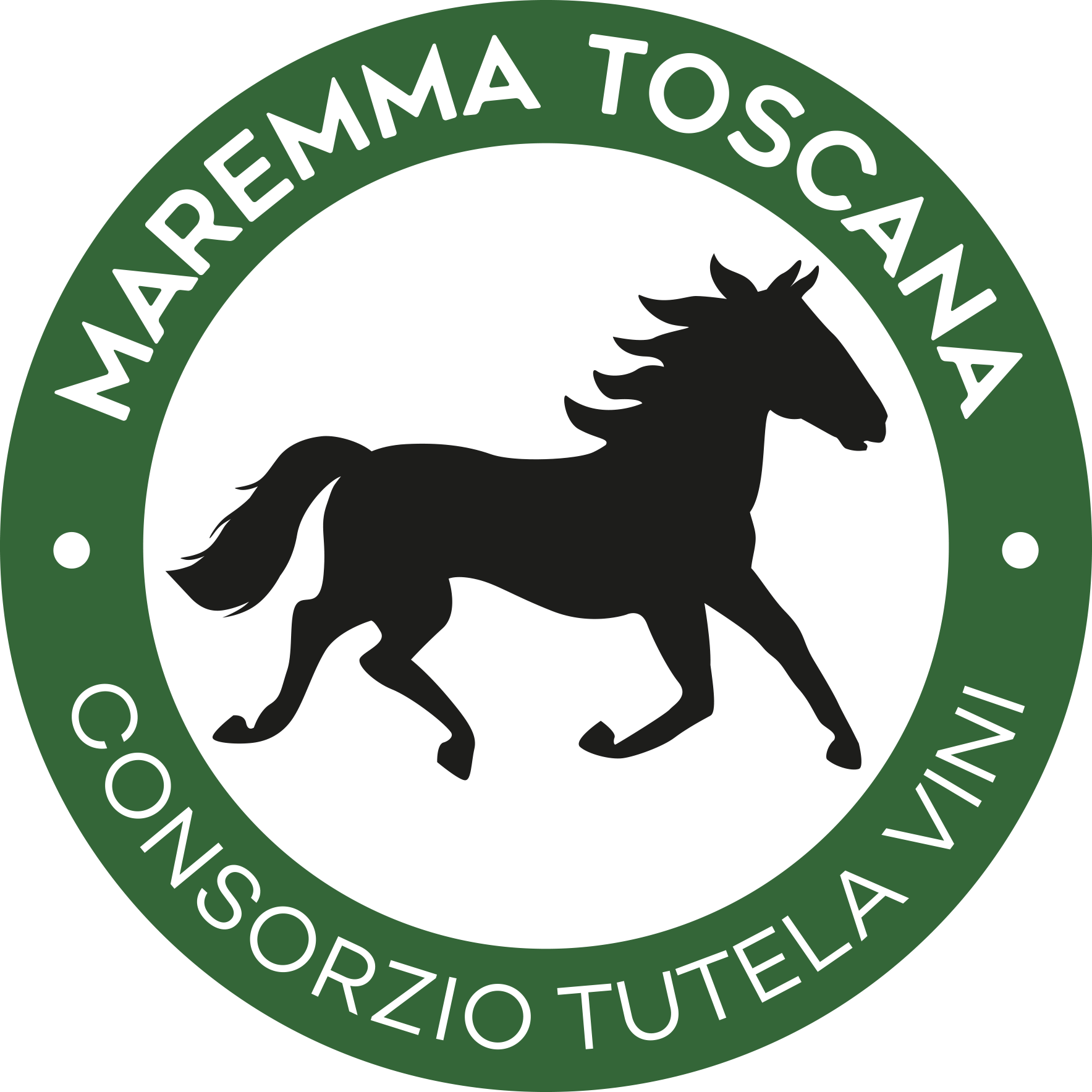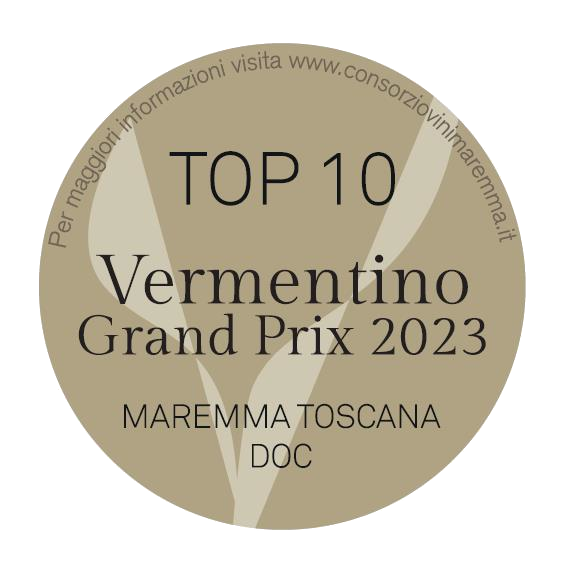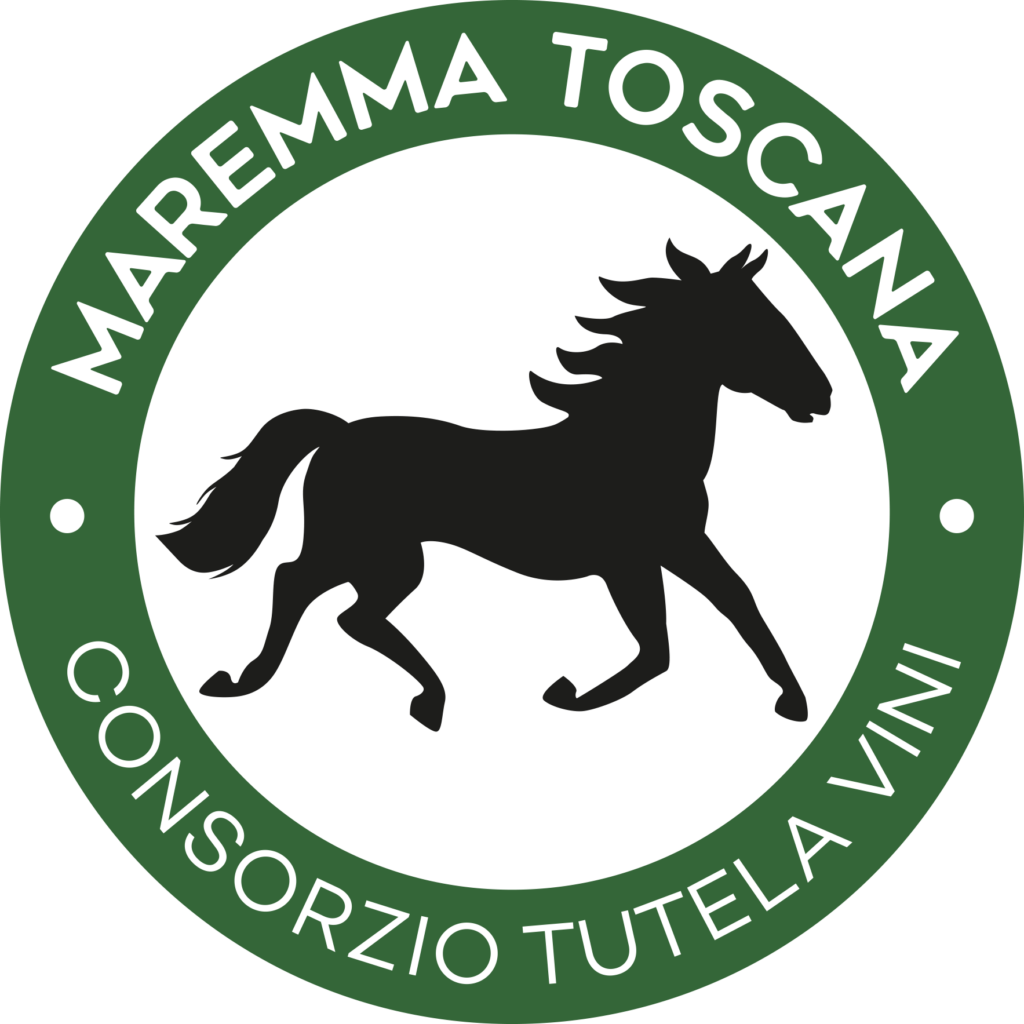Canaiolo nero
It is a traditional vine of Tuscany, which in Maremma, over the years, has undergone a downsizing of the cultivated areas, passing to just over 16 hectares today, mostly located in the municipalities of Magliano, Grosseto, Cinigiano, Manciano and Scansano.
It is also known with the synonyms Canina, Cagnina, Uva dei cane, Uva Canaiolo, Uva donna, Uva merla.
The name of this vine is most likely linked to the Latin term dies caniculares, or the canicular days of the Romans, i.e. those of the so-called heat wave, the sultry period located between the end of July and the last days of August, when the grapes change color. , therefore corresponding to the phenological period of veraison. The existence of synonyms such as Grape of dogs, Canina or Cagnina also suggest a derivation of the name from dog rose or canine grass, due to the typical bitter taste of the wine. The origin of the vine is, however, still uncertain, although it could be a native Tuscan variety, already known at the time of the Etruscans.
It is a vine with an average ripening period and low vigor, which prefers the soils of well-exposed hilly areas and climates with warm autumns, and adapts quite well to clayey soils.
The wines are full-bodied, very colorful and quite alcoholic, with a soft and velvety flavor, but with a tendency to bitter when subjected to aging, which is why it is almost always vinified together with other grape varieties, primarily Sangiovese.
Canaiolo nero wines can be drunk throughout the meal, especially if young, and go very well with the savory first courses of the Tuscan tradition (pici with meat sauce, Maremma tortelli, acquacotta or pappa al pomodoro), with land appetizers, with white and red meats and more or less mature cheeses.
The Canaiolo nero and Maremma Toscana DOC grape varieties:
Maremma Toscana DOC “Rosso” and “Rosso Riserva” (presence in the maximum limit of 40% as complementary black berried grape)
Maremma Toscana DOC “Rosato” (presence in the maximum limit of 40% as complementary black berried grape)
Maremma Toscana DOC “Rosato Spumante” or “Rosè Spumante” (presence in the maximum limit of 40% as complementary black berried grape)
Maremma Toscana DOC “Novello” (presence in the maximum limit of 40% as complementary black berried grape)
Maremma Toscana DOC “Red Government for Tuscan use” (presence in the maximum limit of 40% as a complementary black berried grape)
Maremma Toscana DOC “Passito Rosso” (presence in the maximum limit of 40% as complementary black berried grape)
Maremma Toscana DOC “Canaiolo” (presence for at least 85%)
Maremma Toscana DOC Bivarietale: Canaiolo associated with another black grape variety (presence between 15% and 85%)


